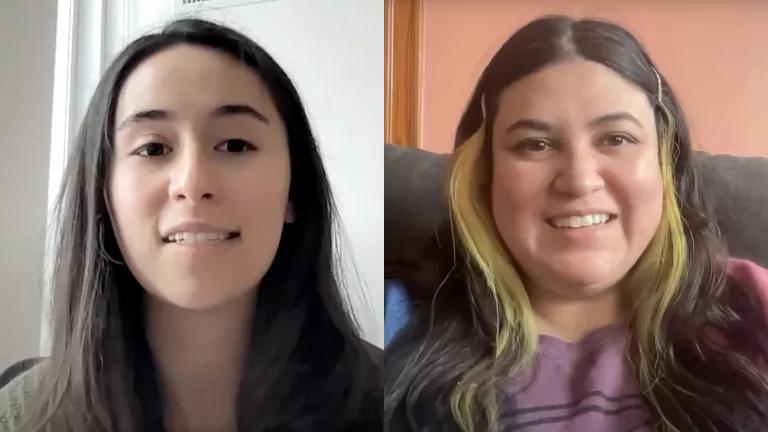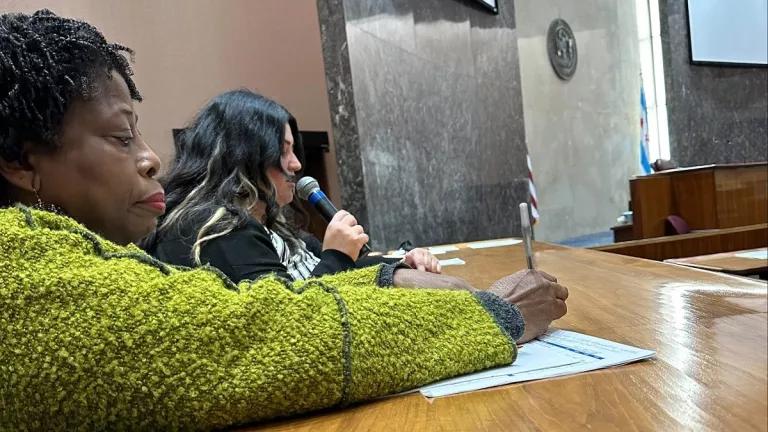Q&A: Chicago’s Drinking Water Problem Needs a Real Solution
NRDC’s Ellen Lee sits down with Gina Ramirez to discuss her experience growing up in Chicago drinking bottled water to avoid lead poisoning, and the urgent need for the city to replace lead pipes.

Chicago is known by many as “the Fresh Coast.” We live right by Lake Michigan, and I grew up enjoying the beautiful beaches here on the South Side. But my house is more than 100 years old, and my parents never trusted our drinking water pipe system. They knew that we had lead service lines, and from age five, I remember my parents buying cases of bottled water, and my dad saying, “Don’t drink the water from the tap. I don’t want you to get sick.”
My parents would make everything from coffee to soup with bottled water. It became the norm. Throughout high school, I remember bringing bottled water to class and seeing my classmates do the same. On trips to the grocery store, I would always see cases of water in my neighbors’ carts.
The issue is that Chicago has nearly 400,000 lead service lines, more than any other U.S. city. And that’s scary because we're the third-largest city in the country and have tons of children growing up here, my eight-year-old son included. Lead can cause irreparable damage, especially to the growing minds of children. While the city has made promises to replace lead service lines and even introduced a lead service line replacement program for low-income residents, little progress has been seen. My mom has been applying for the program for the past two years and has gotten nothing but rejections after jumping through hundreds of hoops.
I live on the Southeast Side, which is dominated by industrial facilities. I'm not only concerned about the toxic air that I breathe, day in and day out, but when I seek refuge in my home, I can’t even put a glass under the tap and give it to my son, because that water is also toxic. Buying bottled water is just a Band-Aid to a public health crisis that has a real solution in sight: removing lead service lines from the ground.
Watch the full Q&A below:




